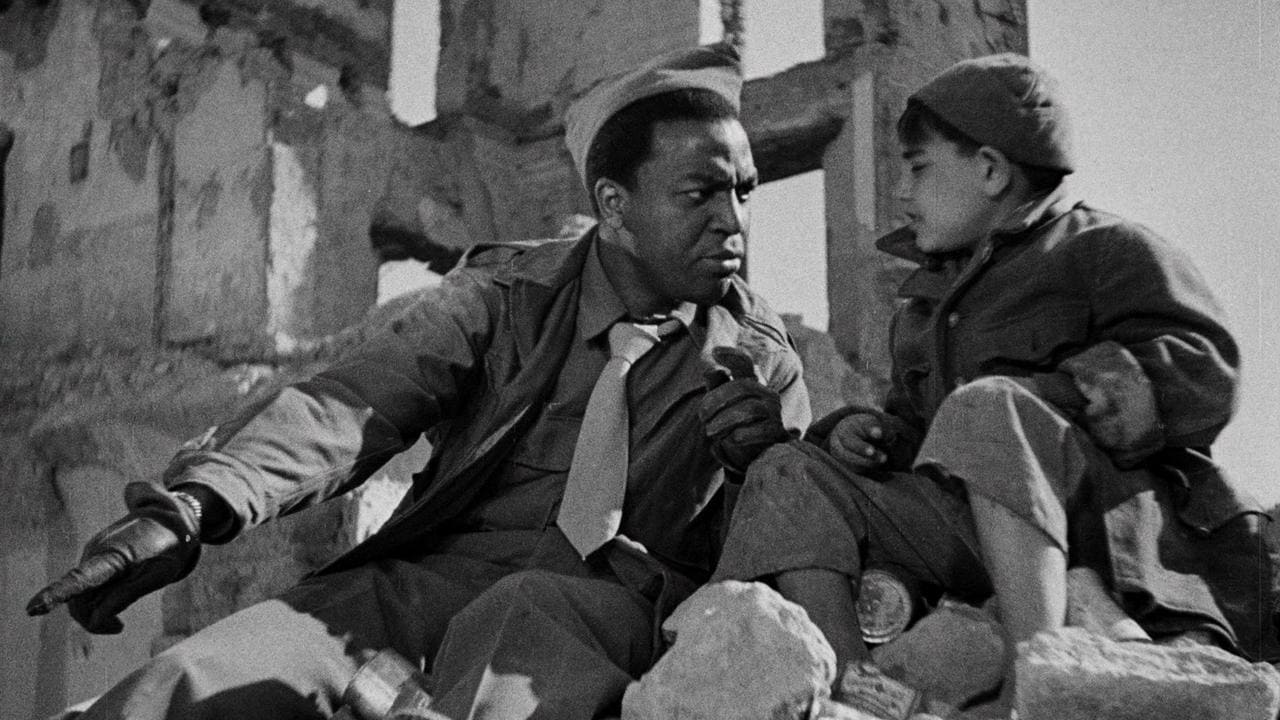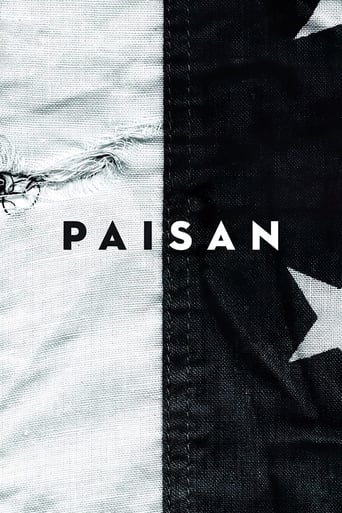Ketrivie
It isn't all that great, actually. Really cheesy and very predicable of how certain scenes are gonna turn play out. However, I guess that's the charm of it all, because I would consider this one of my guilty pleasures.
Aubrey Hackett
While it is a pity that the story wasn't told with more visual finesse, this is trivial compared to our real-world problems. It takes a good movie to put that into perspective.
Sienna-Rose Mclaughlin
The movie really just wants to entertain people.
Guillelmina
The film's masterful storytelling did its job. The message was clear. No need to overdo.
SnoopyStyle
It's six vignettes of the Allied invasion of Italy. There is humor, romance, poignancy, drama and most of all there is tragedy. Together the six stories stitch together a mosaic that is hopefully as enduring as one of the great artwork of history.An American recon squad enters a Sicilian village. One of them comes from a Sicilian background. Local girl Carmela guides them past German mines taking shelter in an old ruin. Joe stays with Carmela as the rest of the squad explores and they are surprised by a small squad of Germans. Carmela Sazio is very stiff as an actress. She's an amateur and there's value in that. However her character has a lot of emoting to do and she has trouble doing it.A group of street performing kids in Naples find drunken negro soldier Joe. Pasquale takes him around and they have an adventure. The poor kid steals from him. He turns out to be an MP and later he finds Pasquale. He is angry and drags Pasquale back home. The poverty of his home convinces Joe to leave him the boots. The kids are terrific and in this case, it's unlikely to get better actor than this amateur kid.In a liberated Rome, American GI Fred spends the night with prostitute Francesca. He has been searching for a woman he met 6 months ago and she realizes that she's actually that woman. This is a great story but I'm not sure it's set up right. It would be great to see them 6 months earlier.Half of Florence is liberated. All but one bridge has been blown and the partisans are struggling against the Germans. American nurse Harriet is desperate to get across to find her love. She is joined by Massimo looking for his family. The location shoot of them sneaking around an abandoned Florence is amazing.A monastery escapes damage from the war and is visited by three American chaplains. Catholic Captain Bill Martin translates but the monks are shocked to find the other two are a Protestant and a Jew. The monks intent on converting the two disbelievers.It's the closing stage of the war in Europe, American OSS and Italian partisans are struggling behind German lines in the Po delta. Supplies are dwindling and the fight is deadly. They rescue two downed British airmen. They are ambushed and captured. This is the most brutal of the stories and it ends the movie with its most brutal scenes.
cocomariev
Robert Rossellini series of short stories will have you at the edge of your seat. From romance to action, each story vividly portrays the Italian Neo-realist style. Paisan touches base on documentary, society and politics. I think that Rossellini did great job at hiring non- professional actors in order to incorporate them within the backdrop of the scenes. The storyline was also very detailed and made it seem like it was more of a documentary than an actual fictional film. The movie had me guessing at some points which kept me interested throughout the film. I noticed that Rossellini left room for us to fill in the story, letting us take on our own interpretation on things. For example, in each of the stories we don't really know much about the protagonist and I found myself creating their backgrounds in my mind. He did a wonderful job at inspiring emotion whether it be positive or negative. I have to admit that before I watched this film in class I was a bit skeptical. I definitely think that it portrays great characteristics of of neo- realism. One of the scenes that I thought was really interesting was when the baby is alone with no one to comfort or take care of him/her. It made me extremely sad but did a great job at illustrating the nature of war. He did a great job at illustrating Italy during World War II. I thought he provided several elements for us to choose from, giving us something to relate to and become emotionally attached to. Rossellini did a fantastic job at creating and directing a film that seemed extremely real. He blurred the lines between documentary and fiction beautifully. Now I see why he was very respected for his films.
Kirtan Brahmbhatt
Paisa is not a film for the average moviegoer. Nonetheless, Rosellini's masterpiece should be seen by all World War II enthusiasts because of its reality and sheer rawness. Paisa lacks the polish seen in most films of this period, especially in America and France, and instead chooses to show the events as if they were seen through an actual witness' eyes. The grittiness, the proximity to the war paints this film hues American war films cannot even touch. Each of the six vignettes, at face value, have no connection. But within each one, the viewer gets lost in the protagonists' lives. Where no back story is given, the viewer is forced to fill in the story in order to make sense of the choices made and as a result, the pain in each story becomes that much more poignant. Finally, once the viewer steps back and sees all of these stories again, they see the underlying misery and determination of the protagonists.The cinematography is simple, yet bold. The scene at the end of the film, where the child, too short to have been hit by bullets, is left crying over the corpse of his family resounds with each viewer and creates questions no one wants to ask or answer. What happens to the child? Does he find a home? We are left to answer, no.Most people say this film lacks intelligent vision on part of the director because of his decision to use amateur actors and actresses. But herein lies the rawness of the emotions contained in the film. Most of these amateurs suffered through the bloody Italian Campaign. These emotions were still near to their hearts when they played these roles. Rosellini is magnificent in his succinct use of bombed out buildings and locales that every Italian would know of. Greatest of all is his use of the Duomo and the Signoria in the chapter in Firenze, juxtaposing how the religious and the lawful cannot control the chaos surrounding the young woman in her search for her lover.All in all, I highly recommend this film to all who are willing to see a "firsthand" view of WWII Italy.
finchy9-976-77969
The film Paisan from Roberto Rossellini is a very influential film in terms of it truly expressed Italian neorealism. The film itself deals with the poor soldier class during World War II in Nazi Germany as they are basically losing the war against the Allied forces. I got this sort of authenticity from the film though just because Rossellini went with non-professional actors which is very common in Italian neorealism films. Because most of these actors were probably soldiers during World War II it gave me a better view of what the characters actually went through in terms of how they experienced the war and it just made the movie more authentic which is what you want in a film like this. It was a relatively long movie, split up into six different chapters, and all the dialogue is spoken in Italian. The Italian dialogue has it's ups and downs for me in terms of, yes, this is an Italian neorealist film so the basic language should be Italian. But for me being of a newer, younger generation these types movies can be hard to sit through just because my generation is used to the violent action packed cinema. And while I really enjoyed Inglourious Basterds (which is like 2/3 in another language besides English) it still just makes the watching experience that much longer and unenjoyable. So my only complaint in this movie is the Italian dialogue with English subtitles, but overall it gets the point across. And I now have a set example of how an Italian neorealist movie is made.

